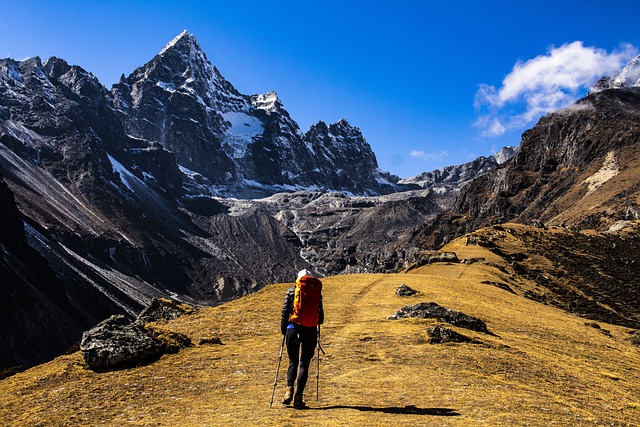Reach us
Blog

22
Mar 2025
How to Plan an Affordable Trek in Nepal(2025)
Have you ever dreamed of walking up to the towering mountains, where sky seems just a few steps away?
Nepal is the uttermost adventurous destination for globetrotters who love trekking. Nepal is simply a trekker’s paradise, with trails that passes through high mountains, ancient villages, and breathtaking landscapes.
Nepal has various trekking routes in different regions, which mesmerizes you with extraordinary natural scenery and cultural diversity. Nepal has a lot to offer, not only for trekkers but also for people who love to walk exploring nature.
So, we agree that Nepal is the perfect destination for trekking, but how can you climb the peaks in this Himalayan kingdom affordably?
Although trekking in Nepal seems expensive, with carful planning and guidence you can enjoy an exquisite time in Nepal. Here is our guide to plan a budget-friendly trek in Nepal. Let’s dive in…..
- Pick A Budget-Friendly Peak To Climb
Many treks in Nepal are more affordable than others. Choose the routes with lower permit fees, shorter durations, and easier access.
| Routes | Max Altitude | No of Days | Permit | Cost/Day | Difficulty |
| Ghorepani Poon Hill Trek | 3,210m | 4-5 days | ~$30 | $20–$30 | Easy |
| Mardi Himal | 4,500m | 5–7 days | ~$30 | $20–$35 | Easy-Moderate |
| Langtang Valley | 3,870m | 7–9 days | ~$30 | $20–$35 | Easy-Moderate |
| Helambu Trek | 3,650m | 5–7 days | ~$20 | $20–$30 | Easy |
| Shivapuri-Nagarjun Trek | 2,732m | 1–3 days | ~$5 | $15–$25 | Easy |
- Pick Best Time for a Budget Trek
For the most affordable trekking experience in Nepal, the off-season is the best for the pocket.
- Winter (Dec–Feb): Cold, clear skies, less crowd, and cheaper accommodation.
- Monsoon (Jun–Sep): Rainy with green landscapes and cheap rates on food & lodging.
- Choose Affordable Accommodation
To keep your trek affordable, choosing the right place to stay.
- Teahouses (Lodges) – $5–$10 per night (Basic rooms, shared bathrooms)
- Homestays – $10–$20 per night (Local village stays, includes meals)
- Camping – Free–$5 per night (Requires own tent & gear)
- Guesthouses in Kathmandu/Pokhara – $5–$15/ night
- Choose Right Food Options
Choosing the right food is important for staying energized, avoiding sickness, and saving money while trekking. Here’s how to select the best meals for your trek.
- Eat at local teahouses instead of luxuary lodges
- Carry snacks (energy bars, dry food) to avoid overpriced meals
- Bring a water filter & reusable bottle to avoid buying bottled water
- Save on Guides & Climbing Gear
Nepal requires a licensed guide for peak climbing.
- Join a group climb (reduces guide costs from $30–$50 per day to $10–$15).
- Hire an independent guide instead of an agency (costs $25–$40 per day).
- Rent climbing gear in Kathmandu or Pokhara instead of buying (saves 50%).
- Bring your own gear from home (saves rental costs).
- Useful Tips To Save Money
- Trek in a group to split guide costs.
- Negotiate accommodation prices, especially in the off-season.
- Use public transport instead of flights (Kathmandu–Pokhara: $10–$15 by bus).
- Book permits directly at Nepal Tourism Board (Kathmandu) to avoid agent fees.
To Sum Up
Trekking in Nepal is truly once- in-a lifetime experience that doesn’t have to be expensive. By choosing shorter, budget-friendly routes, trekking in the off-season, and staying in teahouses , you can explore the Himalayas without overspending. Opt for meals from small eateries for energy, rent gear instead of buying, and use public transport to cut costs. Hiring an independent guide or trekking solo (where allowed) further reduces expenses. With careful planning, you can complete an unforgettable trek, making Nepal one of the most affordable trekking destinations in the world!
